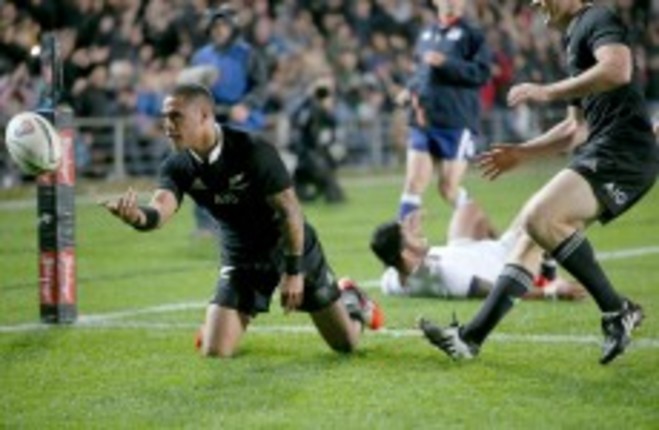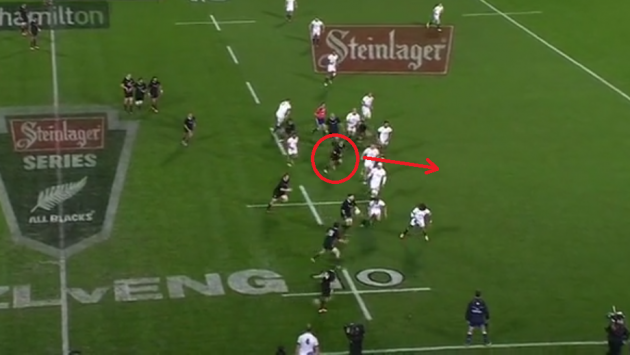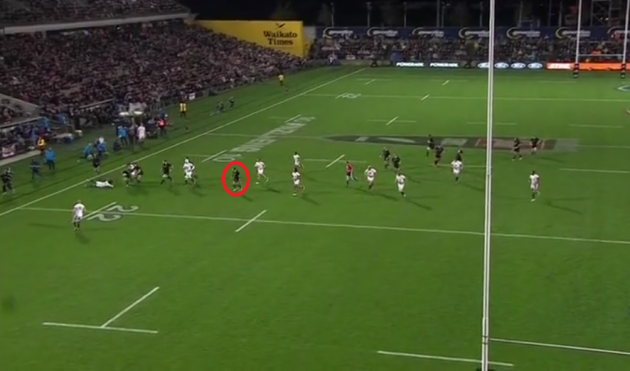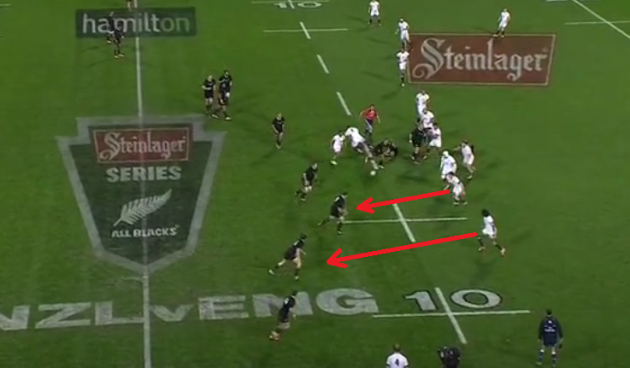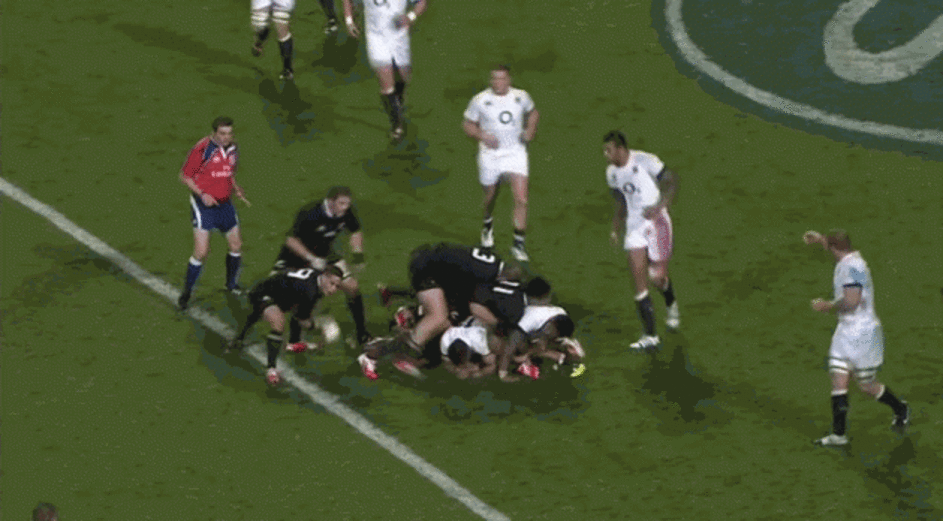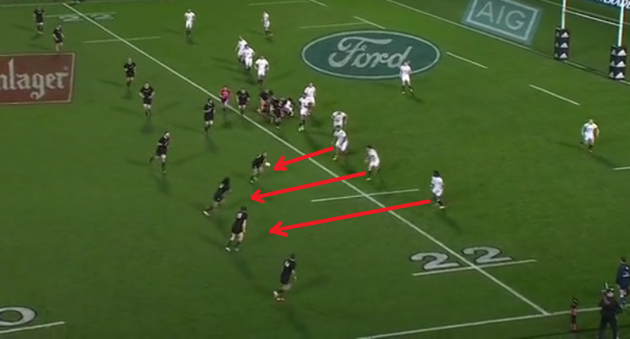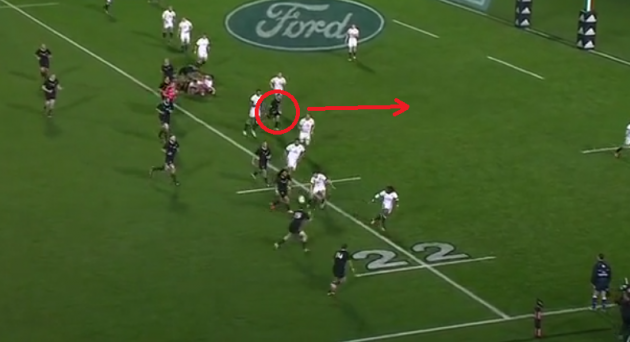LAST WEEK, WE took a close look at the support line Chris Ashton ran for his try in the final play of England’s second Test defeat to New Zealand.
That piece of tracking was typical of a player who is always alert to the possibility that a teammate will make forward progress in a wider channel; the wing consistently anticipates play and moves into clever positions from which to benefit.
Another man possessing similar attributes is Kiwi scrum-half Aaron Smith, whose support play is one of the aspects that makes him a strong candidate for status as the best number nine in world rugby.
New Zealand’s third Test 36-13 victory over the English on Saturday saw Smith run in two tries that came as a result of his intelligence off the ball. The first try came after 26 minutes, with the scrum-half taking an inside pass from Cory Jane to score.
Many of the elements which helped Ashton to score in Test two are present again from Smith, although he is the player who starts the phase of attack with his pass to Kieran Read from the base of the ruck.
Before the ball even shifts from Read to Ben Smith, the scrum-half has recognised the chance of a break out near the touchline and produces his first burst of acceleration in behind the English defence.
As Jane steps inside the tackle of Marland Yarde, Smith realises that he is slightly ahead of the ball. He has almost anticipated his teammates’ attacking movements too well, and is forced to stutter his stride briefly to allow Jane to get ahead of him.
With that clever readjustment bringing him back into play and available for a pass, Jane is presented with a simple 2-on-1 against England fullback Mike Brown. The wing’s short pass is perfect and Smith canters over for yet another clinically-executed New Zealand try.
Smith’s involvement is decisive, starting the phase of play with a crisp pass to Read that allows the No. 8 an opportunity to turn a favourable attacking situation into a bust of the English defence.
The scrum-half’s ability to read the game intelligently also allows him to immediately recognise the chance after his own pass. As we see below, the Kiwis are in a numbers-up scenario, something Smith picks up on rapidly.
Smith’s teammates superbly execute to turn the above situation into a break, and the nine’s anticipation and work rate allow him to be in the right place to take the inside ball from Jane.
Seven minutes later in the same game, the Highlanders halfback was at it again, getting on the end of a Ben Smith assist to score his second try. There were clear similarities to the first, as the 25-year-old started the phase of play from the base of the ruck, before anticipating a break wider out.
Again, Smith instantly recognises that his team have a hint of an overlap with England struggling to get defenders around the corner and to the left of the defensive ruck. While the break doesn’t take place out by the touchline, Smith sees that there is a strong chance of a bust.
Smith’s instinct is to accelerate in behind the English defence again, moving ahead of the ball in anticipating where it will end up.
His reward for that ability to read the game and work hard to get to where he thinks play may flow to is another try. As pointed out in the article on Ashton, there are other instances when the ball may not find its way back into Smith’s hands, but his hard work is worthwhile for occasions like the two above.
It’s also worth pointing out that Ben Smith has other options to offload to in this instance; Ma’a Nonu is on his right, while Aaron Cruden has worked hard to burst onto the fullback’s left after his pass.
New Zealand excel at the basics of the game, and this level of support is typical of their clinical ability to convert glimpses of attacking opportunities into five points on the score board.
